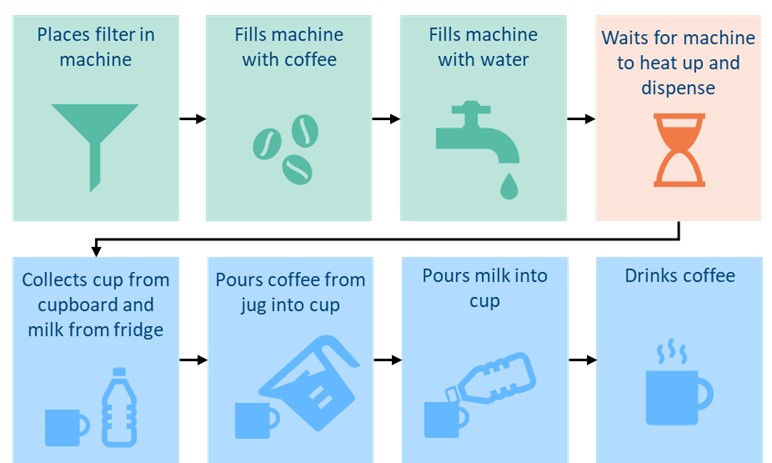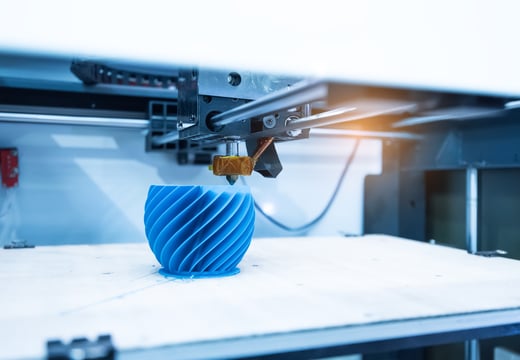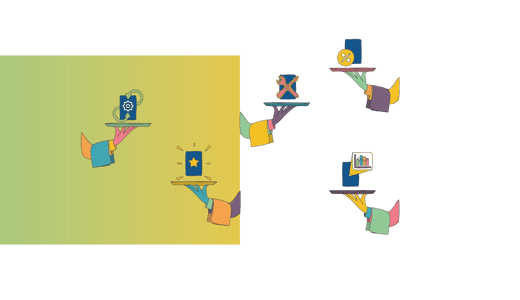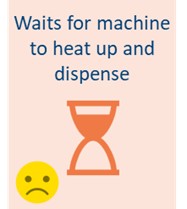
Workshop tools: the value of user journey mapping in innovation workshops
March 2021
By Francesca Stephens - Product Designer and Sustainability Insights Lead at 42 Technology

At 42 Technology, we use a variety of tools to help us generate new ideas in innovation workshops. Innovation projects come in many flavours; from deeply technical challenges to simplifying user interaction. Whenever a challenge involves a user aspect, my favourite tool in the box is user journey mapping.
User (or customer) Journey Mapping is commonly used in all forms of design. I have applied user journey maps in product design and user experience (UX) design, but they are also commonly used in service, communication, and interior design. Our approach to user-centred design projects always involves personas and user journey mapping.
A user journey essentially documents the individual steps of a user’s day, or a specific task they might carry out. It may be intended to detail how a user interacts with a product you intend to redesign; or to understand the frustrations of a particular user whilst using a product. A user journey should be directly linked with a user persona.
Typically, user research will start with a prototype persona and journey. This is normally then validated and reformed through interviewing several real users. Once there is a realistic user persona and journey, it can then be used in an innovation workshop.
Developing a realistic persona is a critical step in the process: without it, the assumptions, product knowledge and preconceptions of the designers and engineers can muddle what is important for a wider selection of users. Think of how you make a cup of coffee. Is that the same as how your best friend makes one? Probably not. So, a designer cannot design a coffee maker based on how they take coffee. Not everyone wants a double shot, decaf, skinny flat white with hazelnut syrup.
So, once we have a realistic persona and a user journey, how does this help us in an innovation workshop?

For our example, we have drawn up a typical user journey for Harry, an office worker, making his morning coffee. His user journey should be evaluated alongside other user journeys.
While analysing Harry’s user journey, the team can ask these questions for each step:
| How does Harry feel, and what is frustrating him whilst using the product? | Is he happy, sad, or just indifferent? Thinking about how the user might be frustrated will help you identify the pain points in the journey. In our example, we may see that at the fourth step Harry is unhappy and frustrated while he waits for the machine to heat up and dispense.
Understanding how the user feels, and the pain points at each step, can also be helpful later when designing for real-world use and producing documentation. For example, when predicting possible use-related failures, an FMEA (failure mode and effects analysis), can only be realistic if it takes into account some realistic user expectations and behaviour. |
| What don't we know? | Having the user journey in the workshop may draw out questions for the user that have not yet been answered. For instance, we do not know how long Harry must wait. So understanding the shortest wait time without frustration is valuable data to find out after the workshop. |
| Can you eliminate this step, or make it more convenient for the user? | Ideally, to improve the user experience, you need to take the effort away from the user and put it into your product. But, if you need to have a user interaction, how do you make it easier? So, in our example:
You can potentially remove step 4 by:
You could make it easier by:
|
User Journey Mapping is a valuable tool that allows teams to quickly empathise with the user and instantly start generating innovative product ideas linked to real-world usage and problems. Even gaps in user knowledge uncovered during the workshop can be pulled out as a valuable theme for further research. And as the product development continues, it’s important that the user journey remains a living thing: used by the project team, scrutinised by the product owner, and validated on an ongoing basis with real users.

If you would like to find out more please contact Francesca:
francesca.stephens@42T.com | +44 (0)1480 302700 | www.linkedin.com/in/fastephens
Francesca graduated with first class honours Masters in Product Design Engineering from Glasgow School of Art. She is a passionate, creative and logical thinking product designer with experience in concept generation, visualisation, CAD, inclusive design and packaging design. She is circular design lead at 42 Technology in addition to having a keen focus on human factors.
Share this article:
Related Articles

Innovation, Product Design
Embracing innovation: the future of product development

Innovation, 2024 Technology Trends
AI powered innovation - the disrupting force transforming the market

Innovation, 2024 Technology Trends
Service-dominant logic - innovation process next steps

What will you ask us today?
We believe in asking the right questions to drive innovation; when we know the right questions, we generate the ideas to answer them.


